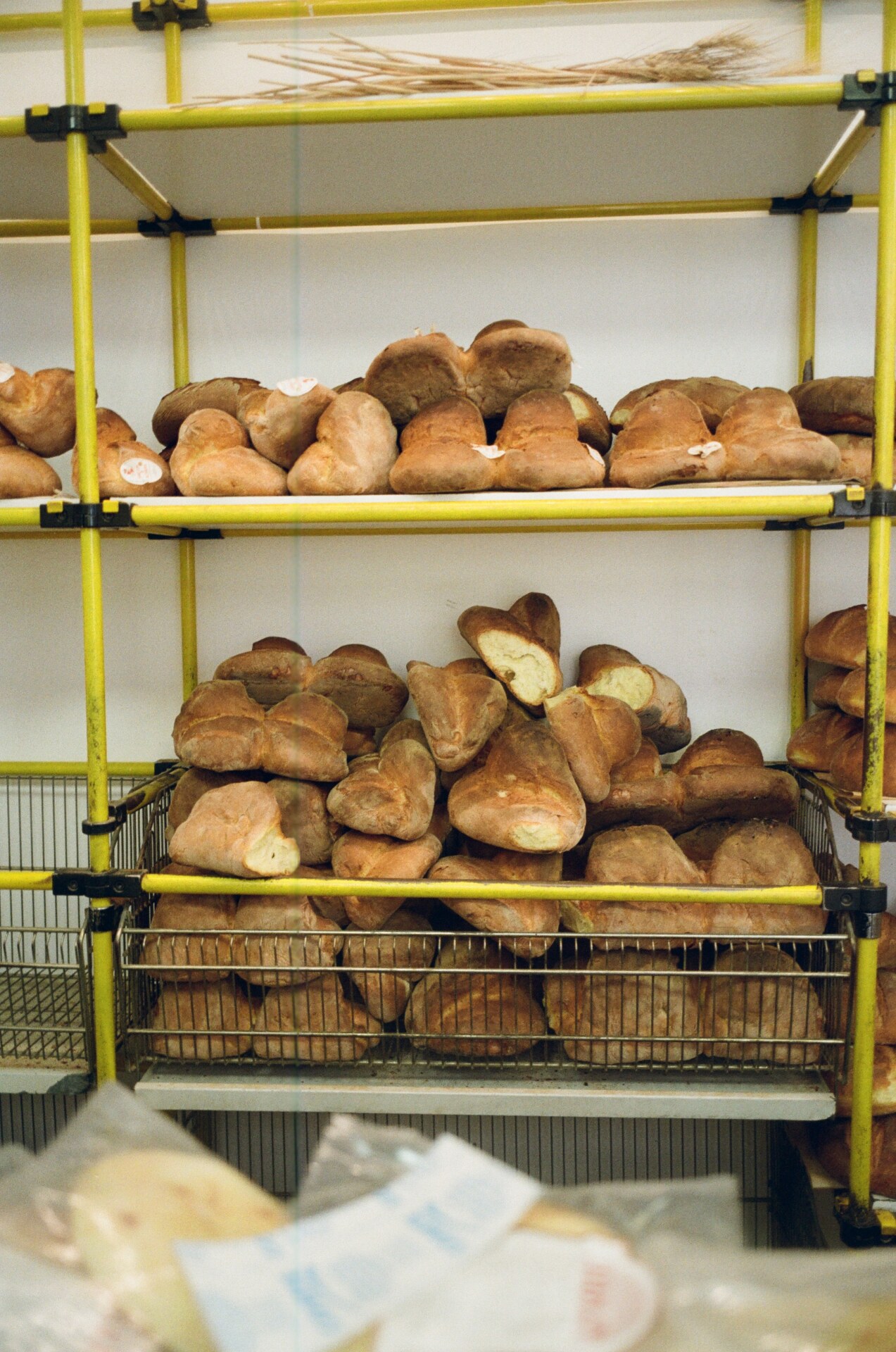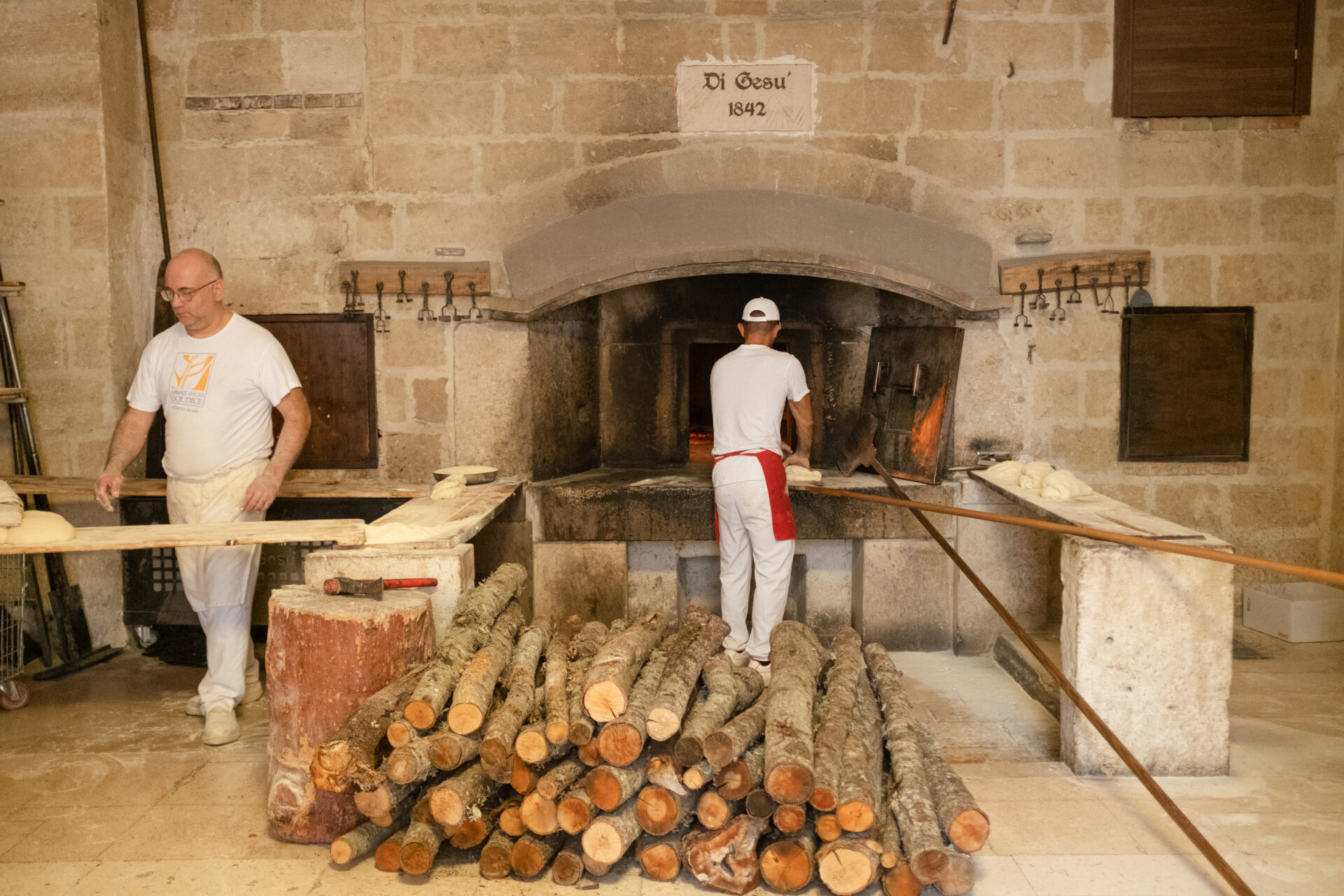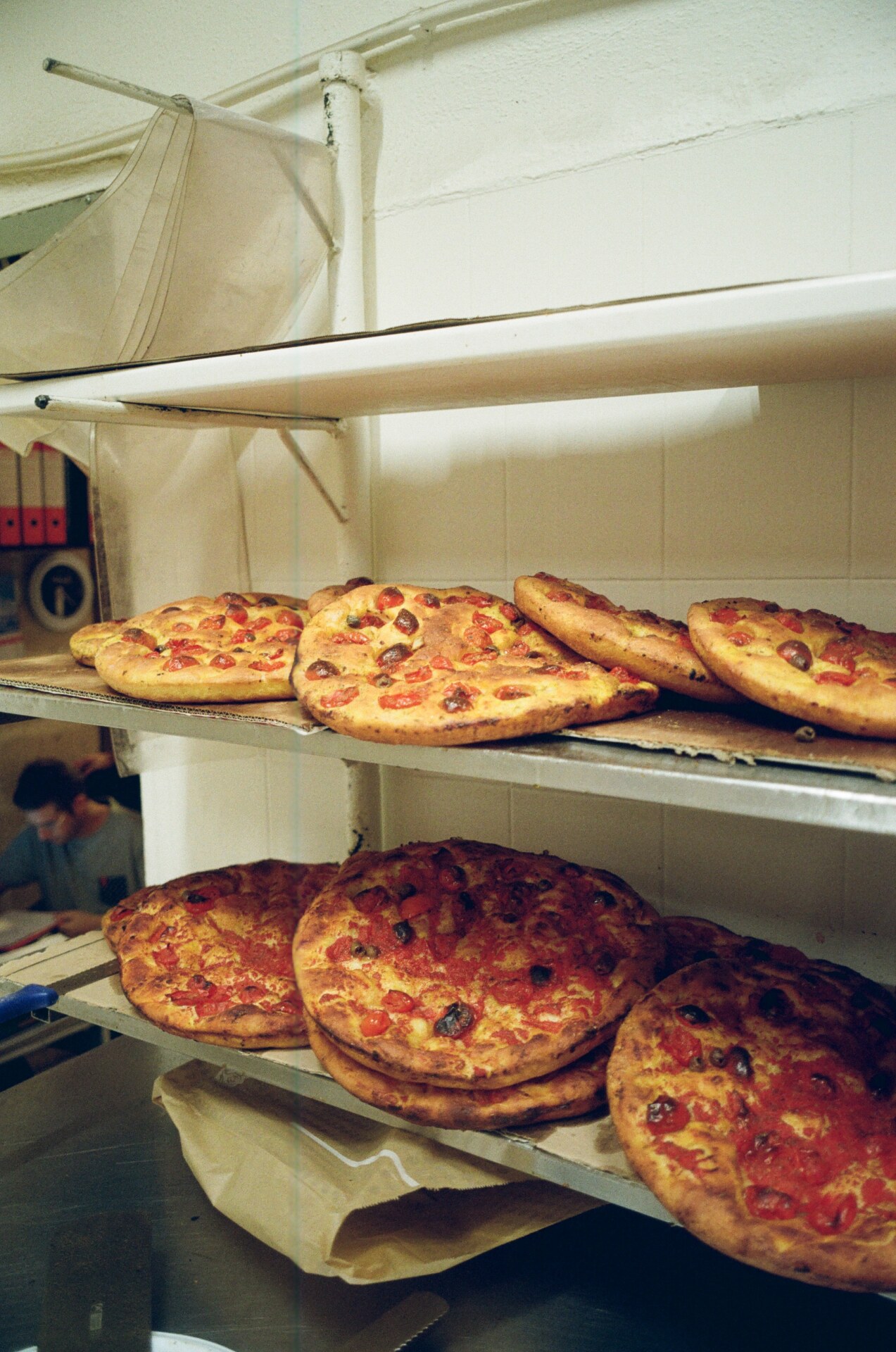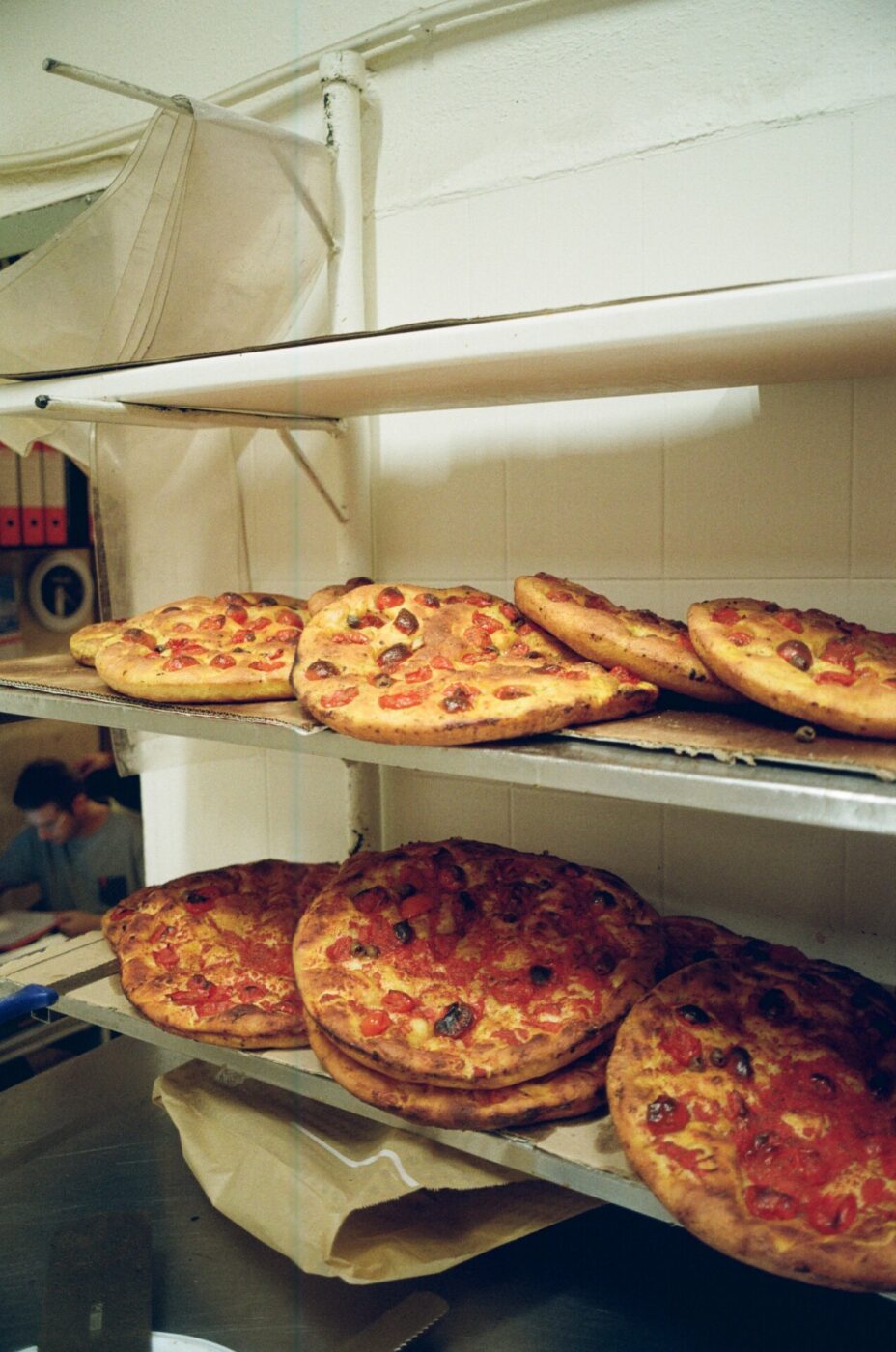“Sentiti a casa. Make yourself at home,” said Beppe, one of the owners of Panificio Di Gesù, as I stepped behind the counter and through the clear plastic curtains into the back of the bakery with my camera.
I was back in Altamura, a small inland city in Puglia, where I had lived for a winter as an au pair almost five years before. The southern Italian hospitality that stole my heart then was pulling me back in yet again. As I walked around documenting the bakers, the dough, the wood and the oven, someone would hand me a piece of focaccia here, another piece of focaccia there. Puglians always make you feel at home.
Di Gesù is a family-run bakery that’s been providing the city with focaccia and bread for five generations, staying true to their original, simple and traditional recipe that creates the famous pane di Altamura. In 2003, the European Union granted the bread a P.D.O. (protected designation of origin) to delineate the strict recipe which only ten local bakeries currently follow: the bread is made using re-milled durum wheat flour, naturally leavened with a sourdough that has risen three times and baked in a wood-fired oven. The final product is a loaf resembling a brioche or wide-brimmed hat, with a yellow crumb and a crunchy crust.
This recipe dates back to as far as the 1st century B.C., as cited in some of the Roman poet Horace’s works:
“Altamura bread, by far the best bread to be had, so good that the wise traveller takes a supply with him for his onward journey.” (Book I, V of Horace’s Satires, 37 BC)
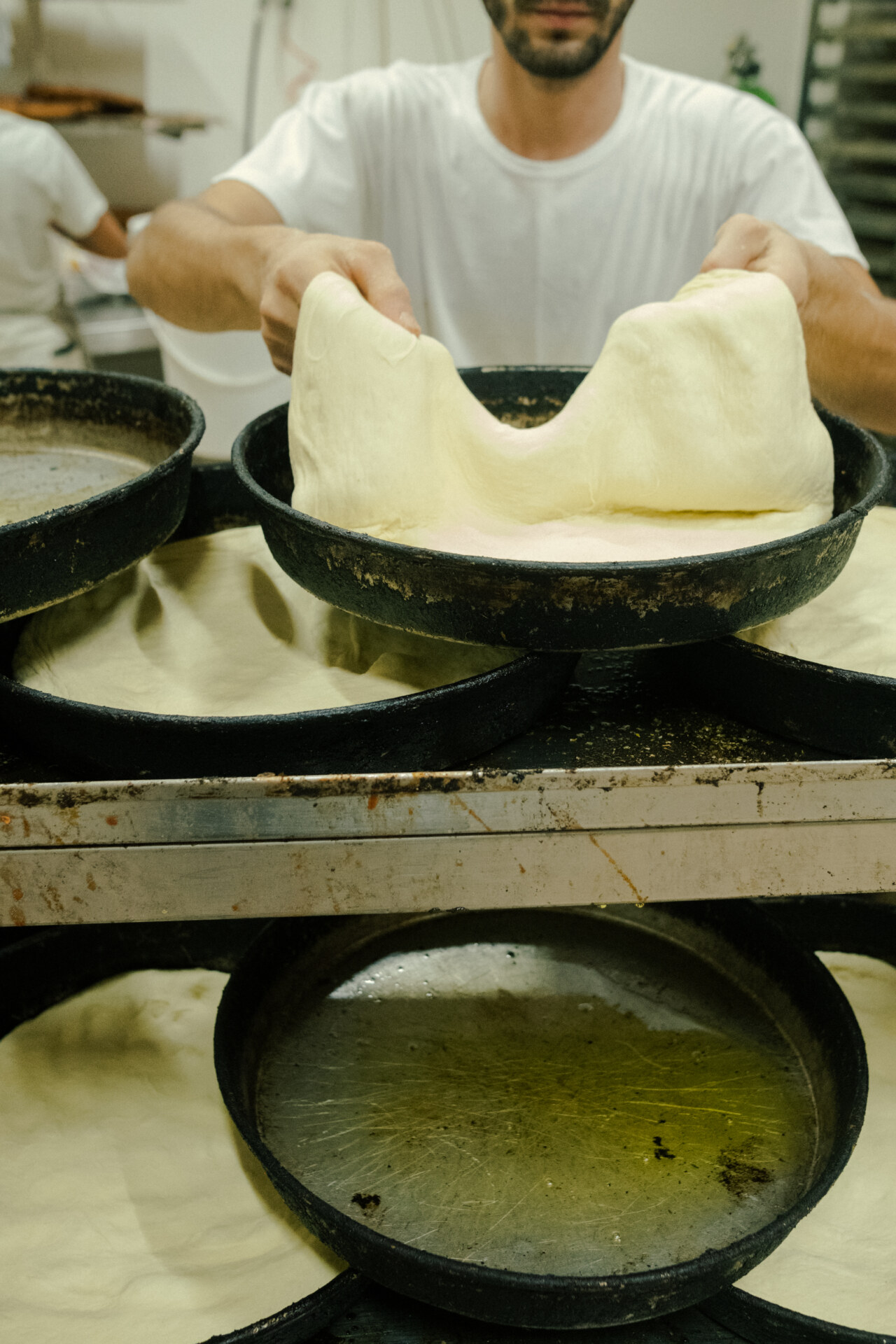
Historically, the dough was made by the women of each individual family, and baked in public ovens, stamped with the family’s seal to differentiate each loaf from the rest. Local documents show that in the 17th century there were as many as 26 ovens working full time.
In Altamura, between about 1 PM to 3 PM, the city of 70,000 goes quiet as everyone closes up shops and kids return from school to eat lunch at home. On every table there is a basket of sliced bread and, likely, a bowl of stracciatella to start, while the smell of every panificio strolls through the streets. Here, food is still a ritual around the table, and people care about where their food comes from. Di Gesu uses Senatore Capelli durum wheat, grown in the heart of Apullia and milled using traditional grinding methods to keep all the germ and bran in the flour.
“Legend goes that when McDonald’s opened up in Altamura down the street from DiGesù, the bakery was so popular that McDonald’s went out of business!” This was how my host dad introduced the bakery to me five years ago on my first weekend passeggiata around town with the family. I couldn’t even imagine such a corporate American chain nestled along the crooked and cracked sidewalks, and especially not in this community whose values don’t align with fast and cheap food.
“It’s true! The people of Altamura continued to come to us for focaccia and bread, and went less to McDonald’s… So it’s true, we did partially contribute to its closing,” Beppe confirmed.
Beppe and his cousin are now the fifth generation to carry out their family’s heritage. As for the sixth, Beppe is unsure how that will play out, with his two kids currently in university following their own creative pursuits. But for now, the wood burns on, the dough ferments, and people of Altamura get their daily bread.
